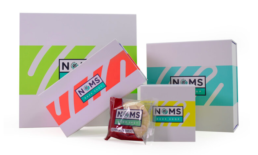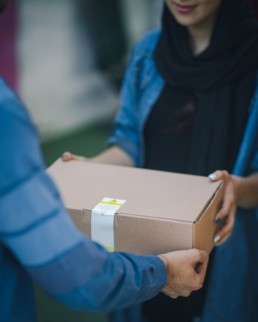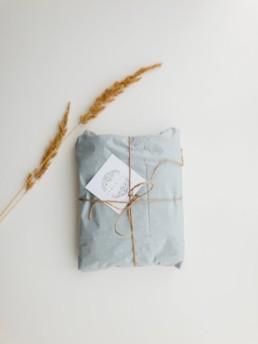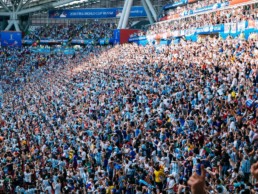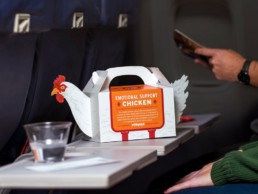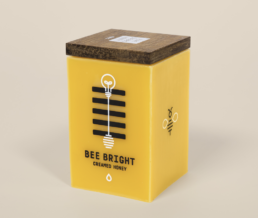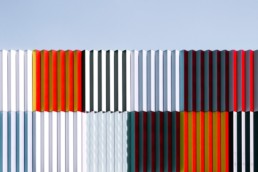How to Promote a New Product to Customers
Creative
One of the biggest challenges a brand faces when launching a new product is trying to figure out the best way to generate consumer interest. After all, most of us are loyal to certain brands and products, and it can be difficult to get people to try something new. This is especially true when the product being marketed has a lot of well-known competitors. How can a marketing team ensure that their brand’s product will be able to be seen- and hopefully purchased- by the right audience? Using custom packaging to help your product stand out against competing brands can help you attract your target market.
Of course, not all custom packaging is created equal. Certain factors affect the subconscious mind of the consumer when looking at packaged products, and can make a customer rank products as more or less attractive, based on the physical attributes of the packaging it comes in. A 2013 study (https://onlinelibrary.wiley.com/doi/abs/10.1002/mar.20651) revealed that attractive packaging triggered more intense brain activity, particularly in the areas of the brain associated with impulsivity when compared with neutral packaging. Additionally, both attractive and unattractive product packaging led to less activity in areas of the brain responsible for reflective thought than neutral packaging. This means that a customer tends to go with his or her gut reaction to a product, and the way it is packaged can make all the difference!
Using Custom Packaging to Promote Your Product
A product’s packaging can be far more important than you may think. Customers get their first impression of a product by looking at its packaging and can make snap decisions based on their initial reaction. For this reason, it is critical to ensure that your brand new product’s packaging stands up to the ultimate test of consumer preference. But how can you be sure that your product’s custom packaging generates the level of interest and excitement your brand needs to make people purchase the product? Here are some of the key psychological factors that make a consumer choose one brand’s product over another.
Color
Did you know that most people make subconscious judgments about a product within the first 90 seconds of seeing it? Not only that but the majority of consumers- nearly 85 percent!- base these first impressions on color alone. When it comes to custom packaging your new product, color is perhaps one of the most important factors to consider. Certain colors are believed to be more eye-catching than others, based on research. Using these colors- red, yellow, green, and pink- in your product’s packaging design may help to increase the likelihood of a customer looking at your product first. However, this doesn’t mean that every single product on the market should be packaged in one of these four colors; in fact, doing this would create an opposite effect on consumers, causing them to potentially pass your product up for blending in with all the rest. By ensuring that your product’s custom packaging is in a different color than any of the competitors in your market, you can create what is known as the “isolation effect” and capture your audience’s attention by being different from the rest. Bottom line: if your competitors all use pink in their packaging, use green. Dare to be different, and you may receive more positive attention because of it! It’s also important to consider the emotional connotation certain colors have with people. For example, blue and lavender are considered soothing colors, which is why they may be best suited for calming products, such as spa treatments or moisturizers. Meanwhile, products for the kitchen need to be associated with cleanliness, which is why white or silver are the most popular colors for the packaging of small appliances. By considering your product’s function, you can strike upon the appropriate color for your custom packaging.

Shape
Quick, what’s the shape of a Coca-Cola bottle? How about a can of Pringles potato chips? Sometimes, it’s the shape of product packaging that makes it stand out against the sea of competitors. While it isn’t often that a product’s custom packaging becomes more iconic than the product itself, like in the two above examples, thinking about how shape can affect a consumer’s choice can help you find the right direction for custom packaging your new product. While there is no such thing as one “right” shape for a product package, there are some things to keep in mind about psychology when you are trying to hit on just the right packaging design. For example, people tend to prefer curves to straight lines and, in fact, show a bias toward sharp, angular shapes in product packaging. This can be because of the way they perceive the product packaging will feel in their hands and naturally gravitate toward packages that are smoother and easier to hold. All of these consumer preferences are something you’ll want to strongly consider f you decide to literally think outside the box when it comes to custom packaging your product.
Texture
Product packaging that includes a distinctive texture can be beneficial in two distinct ways: not only can it help make your product easily identifiable even by touch, but it can also create a pleasing tactile experience for your customer that gives them a positive association with your brand and the product itself. Choosing a fun texture will encourage consumers to hold your product’s package for longer than they may have with an untextured package. This, of course, can lead to them purchasing the product, even if they didn’t intend to buy anything at all! Smooth matte and high-gloss surfaces can be used to make custom packaging pleasing to the touch, as can soft, fluffy textures. Using texture in your product packaging can also help convey a certain air of elegance or prestige about your brand, causing customers to look upon it as a luxury item. Some brands that market high-end products rely on texture to connote an upscale, sophisticated feeling and make customers feel elegant for choosing them. Depending on the nature of your brand and product, you can make an appropriate choice for a custom packaging texture that makes customers want to hold it forever!
It’s easy to overlook the print on a product’s custom packaging, especially when you are already thinking about its color, shape, and texture! However, typography can make a huge difference in the success of a product. Since customers who are unfamiliar with your new product will be inspecting the package for information about it, they will be sure to make a stronger connection with packaging that contains a font that resonates with them. It goes without saying that easy-to-read text will help your customers better understand the attributes of your product in a shorter time, but there is something to be said for an ornate script if that font better exemplifies the nature of your brand. Once again, choosing the typography that will accompany your other custom packaging choices is more about understanding the mission and story of your brand: try to choose a font that is short-hand for your brand identity and how you want to be perceived by your audience. For example, products that are more whimsical in nature, such as children’s toys, are best served by a playful, handwritten-looking font, whereas a luxury brand might opt for a serif print font to add a certain old-school weight to the packaging.
By understanding how you want your product to be perceived by the public, as well as knowing your target audience, you will be able to hit upon a winning packaging design that can get you noticed by the right people. Be sure to refer to these four key factors and see how your custom packaging design stacks up!
Looking for a solution? We can help.
Headquarters
9211 Corporate Blvd Ste 110
Rockville MD 20850
Satellite Offices
Dallas, TX
Paris, France
San Francisco, CA
Scottsdale, AZ
info@vivaboxsolutions.com
Phone
800-529-1988
Minimum Order Quantities:
RPET Totes: 3,000
Kraft Shoppers: 5,000
Rigid Boxes: 3,000
Folding Cartons: 5,000
Developing Promotional Kits: 5 Tips For Success
Creative
We’ve all heard the expression “thinking outside the box” so often, it’s become something of a cliche. But what about rethinking the box itself? When your marketing team is developing promotional kits for a client, it’s essential to think about what the brand hopes to accomplish by launching this kit, and to use the product’s strengths, selling points, and target audience to devise a fresh new way to reach a possibly already oversaturated market.
Today’s marketing departments face unique challenges that largely didn’t exist just a decade ago. While their predecessors were up to their eyeballs in decisions pertaining to TV, radio, and print media, present-day marketing professionals need to concern themselves with how their client’s product or service is received by a global audience connected via social media. Not only has our consumer base grown in numbers, but it has also grown in sophistication- people no longer want to feel as if they are being sold something, and instead are more drawn to story-driven narratives about a company’s founders, brand identity, or social consciousness. This authentic aspect helps drive sales, build brand loyalty, and raise the level of consumer awareness for a company, and must carry over from website to social media pages to email campaigns. By developing promotional kits, your marketing department can help make your brand’s story more three-dimensional and bring it to life by giving consumers an actual, physical thing they can touch and experience. The ability to hold something in your hand, to try it out and feel it, can help make more conversions than even the most polished SEO. In a digital world, it’s still important for companies to establish a physical connection between their products and their customers, and there’s no better place to start than with a well-developed promotional kit. Here are a few fundamentals for developing promotional kits that can help you turn even the most jaded consumers into an enthusiastic customer base.
What’s in the box? WHAT’S IN THE BOX???

The very nature of a promotional kit is to make someone excited about opening it! Think back to being handed a birthday present in your childhood: chances are the more beautifully the box was wrapped, the more you couldn’t wait to see what was inside. The same holds true for a promotional kit- the more creative the package, the more a consumer is likely to want to open it. By developing a promotional kit design that aligns with the identity of the brand and resonates with your target market, you are getting a lot of people interested in your product before they’ve even seen it.
Picture Perfect
OK, pop quiz- what’s the first thing people do these days when they are served a particularly exquisite meal? They whip out their mobile devices and photograph their dishes for social media, right? And once it’s posted, that’s free advertising for the restaurant that prepared the food. What if you could generate the same frenzied excitement responsible for restaurant food photography with your promotional kit? By getting exceptionally creative with packaging, your promotional kit could find itself featured on many an influencer’s Instagram feed. In fact, if you’ve got an impressive-enough promotional kit to warrant it, you could find your product featured in a YouTube unboxing video with over 1 million views, depending on who received it. That’s right- your promotional kit could wind up being slowly, lovingly taken out of its box by a high-profile YouTuber while 1 million people watch intently. It pays to create promotional kits that inspire that kind of large-scale intrigue!
Be Heard
A number of companies in today’s marketplace use their brand as a platform for speaking out about social, political, and environmental issues that are near to their hearts. A promotional kit can make a significant impact on a like-minded target audience by incorporating these views and ideals into its packaging strategy. Several quick-service restaurant concepts, for example, use inspirational quotes from famous people such as Gandhi, Rosa Parks, and Anne Frank, to decorate their paper bags, cups, and other consumables as a way to promote their products and their values simultaneously. By developing promotional kits with a message, a brand can be heard and seen at the same time, and build a following based on shared ideals and beliefs.
Take It Easy
Of course, when developing promotional kits for a brand, the goal is always to make the company stand out from the rest of their competition, but this does not necessarily mean the kit has to be overly complex. In fact, the more complicated the design of your promotional kit, and the harder it is to open, the more of a turnoff it can be for recipients- not just for the kit but potentially for the brand itself! It’s best to take a simple design concept and build on it from a creative standpoint. That way, your target audience will be able to appreciate the kit’s singularity without becoming frustrated while opening it!
Listen to Your Brand
As marketing professionals, it is your job to take a kernel of an idea and help it explode into a creative, memorable, and beloved concept. Products are helped along by the catchy slogans, engaging content, and exciting imagery that their advertising and marketing team comes up with, but not even the most awe-inspiring tagline will do a single thing unless it speaks to the brand’s already-existing values. For example, a fast-food burger joint markets a lot differently than, say, an investment firm, just because of how different the two products are. By staying tuned into your core audience, the nature of the product itself, and how the brand wishes to be represented, your team can develop a promotional kit that hits all the right notes!
The art of developing promotional kits is something that will continue to be highly valuable to a marketing firm, regardless of how much farther down the digital rabbit hole we go. People are always going to want an actual product sample they can try before they commit to a purchase, and by knowing exactly how to put together a killer promotional kit, your team will have a distinct advantage over competing brands who are putting out less exciting kits, or no kits at all, to consumers.
Looking for a solution? We can help.
Headquarters
9211 Corporate Blvd Ste 110
Rockville MD 20850
Satellite Offices
Dallas, TX
Paris, France
San Francisco, CA
Scottsdale, AZ
info@vivaboxsolutions.com
Phone
800-529-1988
Minimum Order Quantities:
RPET Totes: 3,000
Kraft Shoppers: 5,000
Rigid Boxes: 3,000
Folding Cartons: 5,000
Using Custom Promotional Boxes in a Marketing Campaign
Creative
In order to understand the challenges faced by the average promotional marketing team, it’s necessary to get inside their heads a bit. What’s the biggest obstacle they need to overcome in order to get consumers to use their product or service? How can they effectively introduce their brand to their core audience in a way that informs, entertains, and educates? When it comes to marketing, custom promotional boxed are one of the best ways to meet these objectives and build a strong brand identity while providing the information their target market needs about the product they are offering. Here are some basic strategies for custom-packaging promotional boxes in a way that will get the right people to pay attention to your brand.

Unboxing Match
If you’ve been paying attention on social media lately, you’ve likely spotted a trend that’s showing no signs of going anywhere. From YouTube to Instagram, unboxing videos are a widespread phenomenon that can provide maximum exposure and recognition for your brand at absolutely no cost! An unboxing video is just what it sounds like: a video of a person unpacking a new product so that other fans of the product or brand can see its contents. While an unboxing video can be made for just about any product on the market, it is most common to see an electronic device, such as an iPhone, or a collectible toy, such as a limited-edition LEGO set, get unboxed for others’ viewing pleasure. The unprecedented rise of the unboxing video has made many companies pay closer attention to how their items are packaged, and strive to make every unboxing experience as aesthetically-pleasing and satisfying as possible.
Since a custom promotional box’s primary function is to introduce consumers to a new product or service, or even to the brand itself, it makes sense that, if a promotional box was packaged interestingly enough to generate excitement and intrigue, unboxing videos would be made and shared over social media outlets by excited members of your target audience. This exposure could potentially lead to the brand and product being blogged about and reported on by industry heavyweights and consumer reviewers alike. All of this publicity can be very good for an as-yet-unknown startup company or new product that has not gained significant traction among its core audience. By amping up the excitement with custom packaging, your promotional box stands a better chance of becoming the subject of positive buzz.
Identity Check
When you think of the phrase “brand identity,” chances are you think of that handful of mega-corporations who have created entire mini-societies based on consumer devotion to a product. A solid brand identity is a quick and efficient way to summarize your company’s mission, values, and process while also building an emotional bond with any consumer who shares those sentiments. Before you plan your packaging strategy for a custom promotional box, it is vital to give serious thought to just how you want your target audience to feel about your company and its products based on this first experience.
Are you a quirky, irreverent anti-corporation that wants to do some good in the world? Are you a serious-minded company that business professionals have relied on for over five decades? Perhaps you are an industry disruptor poised to change the face of our modern world forever. Whatever your brand, the first step of your marketing campaign should be to define its identity and then use that information to design your custom packaging concept for promotional boxes.
Make It Stick
People receive things in the mail all the time- and most of it gets tossed in the trash or recycling bin! It’s sad but true that a substantial number of promotional marketing materials never even get opened by their intended recipients. What if you could guarantee that your company’s custom promotional box would be the one they open? With creative custom packaging, you can! People enjoy being entertained and pleasantly surprised, and they want to feel as though a specific brand message resonates with them. In our modern world, we receive so much input that it all starts to sound like white noise after a while. By custom-creating a standout promotional box, you can ensure that your target market will tune in for a moment and receive your brand’s message loud and clear. With a creative approach to packaging, your promotional box will be the one that sticks with your audience long after they’ve opened it.
Take it Easy
Just because your custom promotional box’s packaging is innovative and eye-catching, that doesn’t have to mean it’s hard to open! Think of the end recipients and the experience you want them to have, so you can customize your promotional box in a way that eliminates difficulty and frustration. All too often, marketing departments choose form over function, which can lead to costly product packaging blunders. Imagine how a consumer will feel about your brand if he or she can’t easily and quickly open the promotional box’s packaging? It’s best to make sure that however you choose to capture your brand values through packaging, it will not require an advanced engineering degree to actually open it!
Label Yourself
You want to make sure that your custom promotional box not only ends up in the right hands, but is then opened and reviewed by those who need to hear your message most. There’s no way you’re going to achieve your end goal of imprinting your brand logo onto the brains of everyone who encounters your promo kit if you don’t first imprint it on the packaging itself. Highly-visible, brand-specific labeling that uses both the company name and logo will go a long way toward helping people remember you. A delightfully-packaged little promotional box that sparks imagination and generates buzz is great, unless nobody can even figure out who put the box out in the first place! By making sure your brand name is front and center, you can be sure that people will be able to identify your company before they ever open the package.
When you are custom-designing the packaging for your promotional boxes, be mindful of the end result your organization is shooting for, and you’re sure to land on just the right strategy! When in doubt, make sure to refer to these helpful hints and your promotional materials will stand head and shoulders above the rest of the competition.
Looking for a solution? We can help.
Headquarters
9211 Corporate Blvd Ste 110
Rockville MD 20850
Satellite Offices
Dallas, TX
Paris, France
San Francisco, CA
Scottsdale, AZ
info@vivaboxsolutions.com
Phone
800-529-1988
Minimum Order Quantities:
RPET Totes: 3,000
Kraft Shoppers: 5,000
Rigid Boxes: 3,000
Folding Cartons: 5,000
ShopTalk 2019. The 10 Things Impacting Your Business Today & Tomorrow. VBX 2-Min Summary.
Creative
The engaging themes (scientific data point of most attendees and most number of mobile phones aimed at speakers and slides) at Shoptalk Las Vegas this past week were: accelerated change, AI, AR & VR-assisted experiences, influencer marketing, and the role of IRL store associates.
Our summary:
-
Shopping should be fun & social (literally and via mobile).
-
Buying should be easy.
-
Corporate silos need to make way for the pure fluidity of IRL —> Digital that consumers move through on their self-guided journeys to conversion and potentially, loyalty.
-
Caution Inhibits Innovation.
-
Hone a physical retail competency that creates moments worth lingering for.
-
The mobile screen is your new window display.
-
Change the metabolic rate of your company (esp. senior leaders)
-
Make Influencer and digital activations part of the product development process – not so late in the game. We call it the new marketing supply chain.
-
From Erik Nordstrom to Barney’s and Crate & Barrel executives, there was a light shone on the changing role of physical stores and the store associates inside. There was recognition that physical stores are a convenient (or at least can be) place to manage returns and for in-store pickup that puts CX front and center. Recognizing that means looking at the ways associates are trained and incented because this is a critical moment for consumers and can engender real loyalty. Additionally, it means (in our opinion) looking at attribution differently – for example, Nordstrom shared that 50% of their store visits begin online.
-
We’re struck by the efficacy of a high-concept custom box/bag kit to help bridge the shopping & buying divide. Like retailers and brands, we are leaning into smart packaging to make these experiences even more interesting for the consumers and to reveal new first-party data.
Vivabox works with CPG, Beauty, Mass, Specialty, Club, and Drug and in every category, the right trial, education, loyalty, and influencer box respects the privileged role of being in someone’s hands and home. Now that’s a brand experience worth sharing, talking about, and remembering.
Looking for a solution? We can help.
Headquarters
9211 Corporate Blvd Ste 110
Rockville MD 20850
Satellite Offices
Dallas, TX
Paris, France
San Francisco, CA
Scottsdale, AZ
info@vivaboxsolutions.com
Phone
800-529-1988
Minimum Order Quantities:
RPET Totes: 3,000
Kraft Shoppers: 5,000
Rigid Boxes: 3,000
Folding Cartons: 5,000
Augmented Reality (AR) 'Smart Packaging' Opens Up New Packaging Potential
Creative
We talk a lot about how packaging is one of the few tangible relationships a brand has with the consumer, as well as its importance to a brand’s narrative and loyalty. This recognition is based on the density of smartphone ownership, sales trends, and overall connectivity.
During a time when everything is mobile (yet everything still has a barcode), augmented reality (AR) packaging, aka digital or smart packaging, is here. It’s the next frontier in experiential branding because it offers enormous untapped potential for retailers and brands to revolutionize packaging and the way they connect and engage with consumers today.
At a time when marketing departments are spending more on digital advertising than ever before–and users are connecting to the web through mobile more than ever before–brands are sitting on an unrealized mobile marketing channel that’s been dormant in every supermarket, home, office, and shopping destination until recently.
AR packaging has become a new way of expanding a brand’s narrative–to offer background information in clever ways and to offer consumers a way to attach to the brand emotionally. It provides another innovative dimension to packaging that gives consumers a surprising experience.
A great example of smart packaging can be seen with Anheuser-Busch, which created a collectible Budweiser cup that lit up in response to crowd noise during the 2018 FIFA World Cup. There was a circuitry built into the beverage packaging that responded to environmental sound with LEDs that flashed, which visually riled up the crowd’s energy during games.
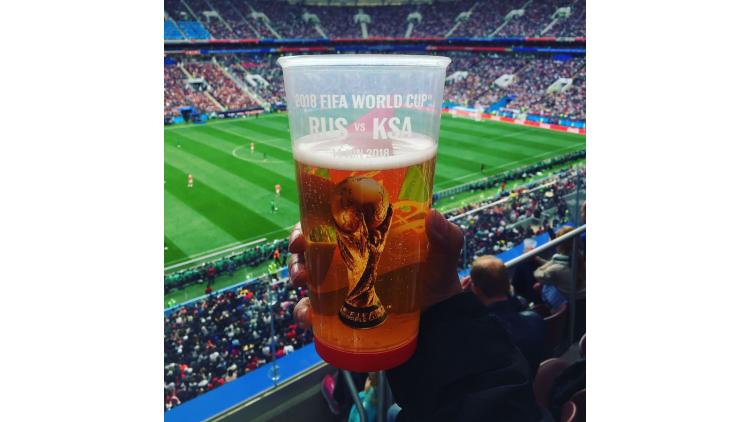
Packaging Digest (Aug. 29, 2018)
Another interesting, smart packaging design comes with “auto-replenish,” which was created by Amazon to support products that are regularly used and need regular refills or replacement. Products can use smart packaging to notify consumers when it is time to reorder so they can request more through their Dash Replenishment Services (DRS).
Researcher Pan Demetrakakes explains, “So far, smart packaging has been thought of mostly in terms of connection to ‘passive’ online information, like recipes or discount offers. However, it has the capability to unlock the full interactive potential of the internet.”
In light of such research, founder of London-based branding agency SharpEnd, Cameron Worth talks about the potential for smart packaging to integrate with the Internet of Things (IoT): “Traditionally, there has been no way to close the gap between the brand and consumer via the product, but now with the IoT, we can use smart packaging to bring brands directly into contact with individual consumers and use this opportunity to build brands post-purchase.”
At Vivabox, we are actively building event and influencer kit experiences with AR and thinking about how trial and loyalty consumer journeys can be impacted with smart packaging.
Although there is a practicality in association with the Internet and ordering, brands also have the opportunity to develop deeper brand connections through stories. For example, pasta sauce brand Francesco Rinaldi recently updated their brand with a smart packaging feature that enabled consumers to interact with brand spokesperson Mrs. Rinaldi. This digital approach allows consumers to pick up the jar from the shelf, scan it, and hear the story of the product directly from the brand “mascot.”

Packaging Digest, Dec 13, 2018
These variations of smart packaging also offer brands some essential opportunities/thought starters:
-
Imagine picking up a trial item, turning on your AR to hear from the perfumer who made the product waxing poetic about the formula and the ingredient origins Star Trek style in the aisle of the store or pop-up.
-
Extend the available real estate for product messaging and promotional offers.
-
Increase brand engagement especially via social sharing while this is still relatively new.
-
Serve contextually relevant information at the point of purchase and consumption.
-
It also drives better consumer data by offering real-time data analytics on a serialized basis, creates a better understanding of users, and helps deliver more measurable results and value-added benefits to customers.
Vivabox can help you with better packaging and connect you with AR experiences to help take your brand story to the next level of digital packaging sophistication.
Looking for a solution? We can help.
Headquarters
9211 Corporate Blvd Ste 110
Rockville MD 20850
Satellite Offices
Dallas, TX
Paris, France
San Francisco, CA
Scottsdale, AZ
info@vivaboxsolutions.com
Phone
800-529-1988
Minimum Order Quantities:
RPET Totes: 3,000
Kraft Shoppers: 5,000
Rigid Boxes: 3,000
Folding Cartons: 5,000
Know Your Customer: Developing Personas for Packaging Strategy
Creative
The key to a successful marketing or branding campaign starts with understanding your target audience, and, a well-defined audience begins with developing buyer personas. In the age of IG and e-commerce, your primary and secondary packaging design should most definitely be part of your CX process and strategy.
A buyer persona is defined as a well-developed character created from customer trends and demands. Most companies attract more than one group of people, so they find it beneficial to develop three-dimensional personalities with names, ages, occupations, certain social statuses, education levels, aesthetic principles, family size, buying trends, and more. Brands interact with people, not cardboard cutouts, so developing these personas are helpful to create a range of insights.
Simply put, developing personas is important, and it is incredible what insights surface when companies take the time to get to know them.
Personas and Packaging
When thinking about brand development and the multiple personas you must nurture, packaging becomes a primary touchpoint. Outside of the actual product, the package is the most tangible branding tool a business has, and these personalities can have a significant impact on your design strategy.
For example, if you’re targeting an older persona, you may want to work with more traditional packaging or play with nostalgic designs that tug at their heartstrings or work with packaging that can be repurposed. You also want to assess your font size and contrast and including smart and obvious ways to open the package for hands that have lost some dexterity.
If you’re going to attract a millennial persona, you may want to develop a more sustainable solution that works with contemporary or forward-looking design and trends. And be sure it has an element of IG-bait.
Packaging the same product in different ways can be a great way to embrace all of your personas without exclusion.
The Power of Personas
Once your business has developed well-rounded personas, what can you do with them? You can do anything! Hopefully, you use them to make every brand decision. Considering that it is the consumer that creates demand, it is essential that all marketing and branding strategies keep all personas in the forefront of every decision.
Consulting personas for insights into what your audience will identify with and what will capture their interest is essential to determining the shape, font, color, textures, and materials you use in your packaging design.
As you develop your packaging for your personas, don’t forget to measure your successes and room for improvement. Analyzing past data and current customer responses is a great way to test if your packaging ideas are meeting consumer standards and how they may be changing. Don’t let your personas get stagnant. They should be an ever-changing point of reference to keep your brand, and packaging, moving forward.
Looking for a solution? We can help.
Headquarters
9211 Corporate Blvd Ste 110
Rockville MD 20850
Satellite Offices
Dallas, TX
Paris, France
San Francisco, CA
Scottsdale, AZ
info@vivaboxsolutions.com
Phone
800-529-1988
Minimum Order Quantities:
RPET Totes: 3,000
Kraft Shoppers: 5,000
Rigid Boxes: 3,000
Folding Cartons: 5,000
The Touchpoint that Matters More than Most: Storytelling with Packaging
Creative
Not only does your packaging carry a product, but it also delivers an experience, and when it is done right, it can be a great experience. It’s not just a means to an end anymore, it is part of a unique customer narrative that is part of the full marketing and customer experience (CX) strategies.
For most brands, the packaging is the most tangible part of the shopping experience, whether it is ordered digitally or picked off of a shelf in a store. So as e-commerce becomes more prevalent, packaging becomes even more critical. It is a physical manifestation of your brand that you cannot overlook. Packaging should be part of your brand’s narrative–it should tell your story and the story of the product inside. It has become such an excellent way to fully embrace your customer (and they will hug you back).
Unlike physical retail, e-commerce businesses have fewer touchpoints to attract and amaze customers, so it’s essential to use every tangible moment to create a branded experience that sets you apart from competitors. You can have the best product in the world, but if the packaging does not contribute to the bigger picture, it can become a lackluster, and sometimes frustrating, experience.
In a recent study by Dotcom Distribution, they found that 52% of consumers are likely to make repeat purchases from an online business that delivers premium packaging and 4 in 10 consumers would share an image of the packaging on social media if it were unique or aesthetically pleasing.
Here are three sure-fire ways to think about the box and how it can become a part of your brand’s story:
1. External Design
The external packaging should guide consumers into the experience before they ever start to open it. From the moment they see and touch the package, they should understand the story you’re telling. Whatever colors, materials, textures, typography, or copy you use, your external packaging should evoke certain feelings and emotions.
For example, Bee Bright’s creamed honey comes in wax packaging with a wooden lid. Once the product inside is used, the wax packaging can be turned upside down, mounted on the wooden lid, and used as a candle.

Such clever uses of colors, textures, and the ability to reuse the packaging beyond its initial purpose creates a beautiful consumer experience every step of the way.
Another original example of packaging design that tells a story is used by Thelma’s bakery. A simply designed box made to look like an oven creates a quirky narrative of freshly delivered cookies straight from the oven.

These examples offer simple solutions for branding that packs a serious punch. When the packaging is as coveted as what’s inside, that’s a brand experience!
2. Internal Wrapping and Messaging
Once the box is opened, the experience should continue. More brands are making sure to use every surface outside and inside the box to tell their story. Whether a company uses tissue paper with branded seals, textured ribbon or twine to embellish the products, or an additional message on the inside of an opened box lid (or a combination of all of these), every piece of the internal narrative should be intentional.
A great example of internal branding can be found in a Trunk Club box. Not only does it have sophisticated, well-designed, and pertinent information on the inside of the lid, the clothing in the box is wrapped in a natural-colored, cotton ribbon and there is a handwritten note from the stylist to give the experience a uniquely personal touch.

This is a perfect example of how simple touches can make an incredible difference in a brand experience and not break the bank. This is the stuff that creates customer loyalty.
3. Packaging Inserts
Marketing collateral and package inserts are wonderful ways to attach additional messaging, offer future discounts, or announce up-and-coming products. It is a cost-effective and versatile medium for building a solid relationship and keeping them coming back for more. Not only does your brand get another chance at engaging the customer, but it is something the customer can take away for future use. Simply put, a well designed and targeted insert can increase customer loyalty.
Companies like Gale Leather offer aged-looking paper with product information printed in brand-specific typography and treats like Turkish coffee or a tea sample. Something so simple means a lot to a consumer because it makes them feel special.

Inserts are always a great way to add a personal touch for very little cost to the business, and the payoff for such small sentiments can be considerable.
Think about how your brand can up the ante on its narrative with packaging. By creating clever, personal, and elegant presentations, you give your customers a full buyer’s experience before they ever get to the end product.
Looking for a solution? We can help.
Headquarters
9211 Corporate Blvd Ste 110
Rockville MD 20850
Satellite Offices
Dallas, TX
Paris, France
San Francisco, CA
Scottsdale, AZ
info@vivaboxsolutions.com
Phone
800-529-1988
Minimum Order Quantities:
RPET Totes: 3,000
Kraft Shoppers: 5,000
Rigid Boxes: 3,000
Folding Cartons: 5,000
The Rising Appeal of Sustainable Packaging: A Win-Win for Businesses.
Creative
“Sustainable packaging” is a growing conversation that has been in the primary and secondary packaging industry for a while now, but even more so in the past couple of years with growing commitments from big box stores like Walmart, food providers like McDonald’s and Coca-Cola, and technology companies like Dell.
These companies are responding to consumer demand and increasing environmental regulations—and both will only increase shortly. According to a 2016 Research and Markets report, the global sustainable packaging market will reach about $440.3 billion by 2025.
So what does this mean for businesses that have not fully converted to sustainable packaging yet? It means that even though businesses may not have time to find the right packaging that meets company goals, environmental regulations, and consumer demands simultaneously, leaning toward sustainability is inevitable.
Here are a few key points to be aware of when thinking about choosing more sustainable packaging:
1. A common concern is that sustainable packaging will increase the price of the product, and companies try to avoid passing cost increases off onto the consumer. What is interesting is that these increases are not as much of a deterrent for consumers as long as they are getting the guilt-free trade-off.
Even if there is a slight increase, for now, many consumers are finding sustainable packaging is worth the additional cost, as it contributes to the entire consumer experience.
GlobalData’s report, “Innovation Scenarios in Sustainable Packaging Materials,” explains that their research has found that two-thirds of consumers worldwide think living an ethical or sustainable lifestyle is vital to creating a feeling of well-being.
Said another way, this means that your commitment to sustainable packaging now contributes to the strength of your brand and point of difference.
2. Because plastics are a petroleum-based product, as petroleum prices rise (partially in response to current US tariffs, partly due to the rise in sustainable products, and partially due to dwindling petroleum resources), so will the price of plastics.
According to the Australian Academy of Science, who is a large proponent of more sustainable packaging, they explain how “Conventional plastics are manufactured using petroleum, coal or gas—all non-renewal resources susceptible to a volatile market of rising cost and demand, coupled with dwindling reserves.”
Increases will then level the playing field for more sustainable packaging, which helps companies make more cost-effective and conscionable decisions. Not only will companies be on the right side of environmental history by committing to more sustainable packaging options, but they will also be on the right side of pricing–it’s a considerable PR boost while the consumer is watching.
3. Another element of packaging that consumers find imperative is aesthetics. In a 2015 Trending Packaging study, appearance was considered a critical factor in purchase decisions. Consumers look for packaging that has the following:
Colors
Appealing graphic design
Letter type and size (especially for an aging population)
Overall brightness of the package
Sustainability, especially with glass containers, reusable and re-sealable packaging, 100% recyclable packaging, and packages with endurance (such as wood).
In a University of South Carolina report, it was explained that researchers found consumers experienced attractive, renewable packaging as a reward.
Similarly, the neural mechanisms in the brain associated with the experience of reward showed increased activation when participants chose aesthetically pleasing and sustainable packaging.
As your business starts to consider the future of your packaging, keep in mind that there are ways to go green, satisfy business needs, keep consumers happy and guilt-free, and increase your brand appeal.
Vivabox can help you design an eco-positive package and supply-chain through our professional design, sourcing and kitting services to meet your eco-commitments and build your brand.
Looking for a solution? We can help.
Headquarters
9211 Corporate Blvd Ste 110
Rockville MD 20850
Satellite Offices
Dallas, TX
Paris, France
San Francisco, CA
Scottsdale, AZ
info@vivaboxsolutions.com
Phone
800-529-1988
Minimum Order Quantities:
RPET Totes: 3,000
Kraft Shoppers: 5,000
Rigid Boxes: 3,000
Folding Cartons: 5,000



